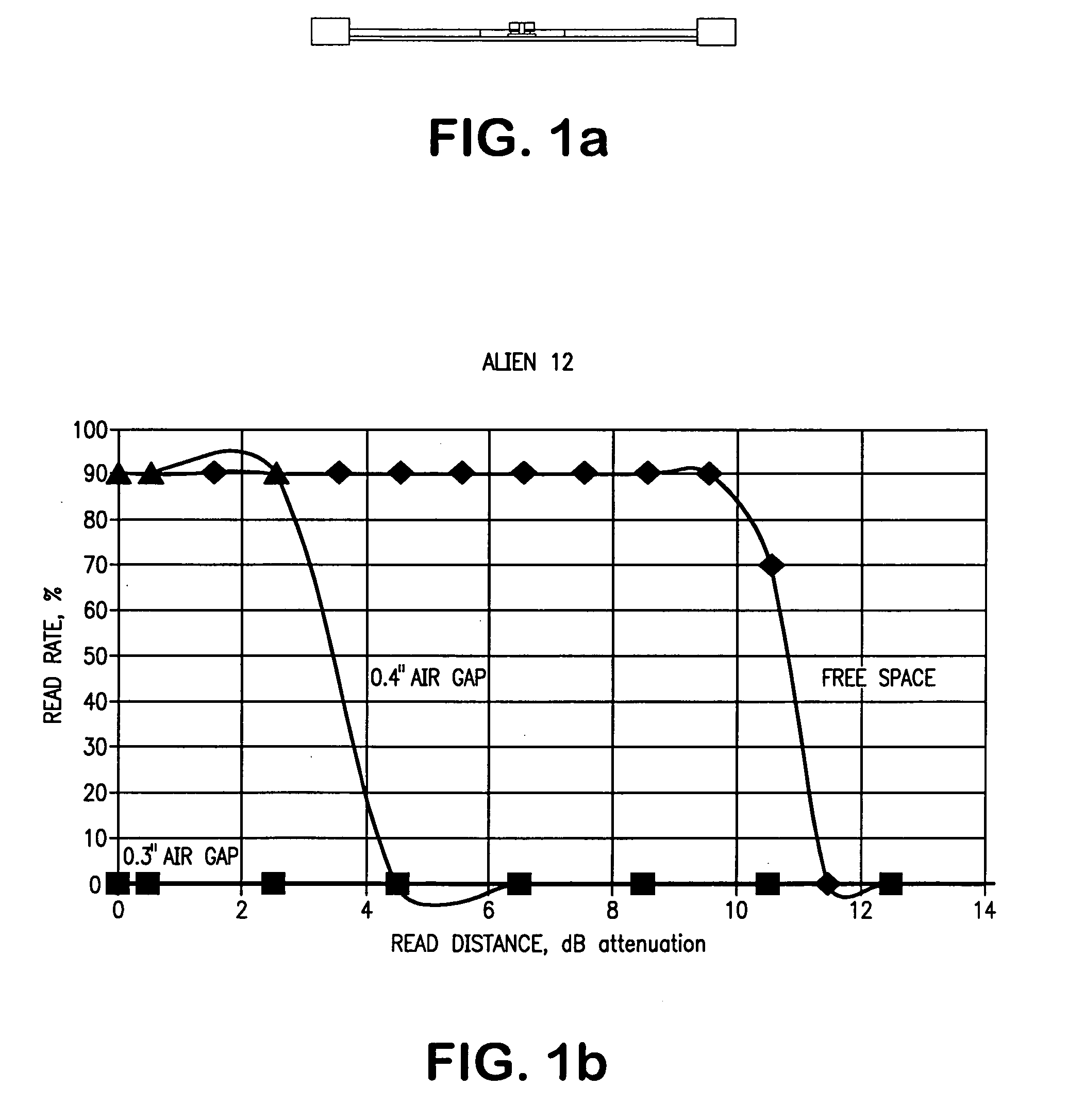RFID tags
a technology of rfid tags and tags, applied in the field of rfid tags, can solve the problems of impracticality of standoff tags in the majority of commercial applications, inability to read high-frequency rfid tags, and inability to read rfid tags attached to metal containers or soft drinks bottles, etc., and achieve the effect of improving the read distance of tags
- Summary
- Abstract
- Description
- Claims
- Application Information
AI Technical Summary
Benefits of technology
Problems solved by technology
Method used
Image
Examples
first embodiment
[0028]FIG. 6 shows the present invention. RFID tag 100 can be specially designed, or purchased from any of a number of companies, such as Intermec Technologies Corporation, Symbol Technologies (formerly Matrics Inc.), Alien Technology, Philips Semiconductor, and Texas Instruments. In the preferred embodiment, the RFID tag operates in the frequency range between 800 and 1000 MHz, with the most preferably center frequencies being 869 MHz, 915 MHz and 953 MHz. This RFID tag can be self-powered by inclusion of a power source, such as a battery. Alternatively, it can be field-powered, such that it generates its internal power by capturing the energy of the electromagnetic waves being transmitted by the base station and converting that energy into a DC voltage.
[0029]Article 110 is the object to be tagged. As described above, articles comprising a metal substrate, or configured to contain liquid are problematic, with respect to read distances. In various testing, a tag could not be read wh...
third embodiment
[0072]FIG. 8 shows the present invention. While the previous two embodiments utilized existing RFID tags, FIG. 8 combines these existing RFID tags with the present invention to create an integral solution.
[0073]Integrated Circuit 300 is affixed to the top surface of substrate 320, such as by soldering or gluing. This integrated circuit preferably contains the identifying information related to the article. Substrate 320 typically consists of a printed circuit board, although other substrates are possible. In most RFID tags, the antenna 310 is affixed directly to the substrate 320. In many applications, the antenna 310 is created by printing specially sized and spaced wire etches directly on the substrate 320. Those skilled in the art are familiar with various processes of embedding antennas into printed circuit boards.
[0074]Affixed to the opposite surface of substrate 320 is a layer of material 330. In one embodiment, the layer of dielectric gradient material described with respect ...
PUM
| Property | Measurement | Unit |
|---|---|---|
| dielectric constant | aaaaa | aaaaa |
| dielectric constant | aaaaa | aaaaa |
| dielectric constant | aaaaa | aaaaa |
Abstract
Description
Claims
Application Information
 Login to View More
Login to View More - R&D
- Intellectual Property
- Life Sciences
- Materials
- Tech Scout
- Unparalleled Data Quality
- Higher Quality Content
- 60% Fewer Hallucinations
Browse by: Latest US Patents, China's latest patents, Technical Efficacy Thesaurus, Application Domain, Technology Topic, Popular Technical Reports.
© 2025 PatSnap. All rights reserved.Legal|Privacy policy|Modern Slavery Act Transparency Statement|Sitemap|About US| Contact US: help@patsnap.com



